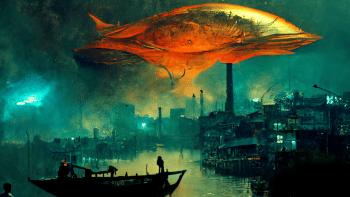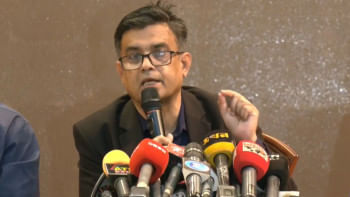Masterpieces in seconds: The wondrous world of AI art

Art has always been a very subjective matter of interpretation. Revolutionary post-impressionist Vincent van Gogh was known to have said, "Art is to console those who are broken by life." Fast forward 150 years, and we see art being created by something with no "life" of its own. Philosophical conjecture aside, AI-generated art certainly has gained a massive surge in usage popularity lately, and doesn't seem to be stopping anytime soon.
Owing to many free (and paid) easy-to-use AI art generators, it is now possible for anyone to create a piece of artwork from scratch. No pens, pencils, brushes, or canvas needed. Just type in whatever you want a drawing of, and the mighty power of artificial intelligence will create paintings for you in seconds. While many hesitate to call AI-generated artwork anything remotely close to masterpieces, one cannot deny the amazing power of technology when you type in prompts like "bird eye view of a cabin on a snowy mountain, expressionist style" and get results that could easily be mistaken for a human-drawn piece of art.

How do AI art generators work?
The first recorded instance of AI-generated art stems back to 1973, from a computer program called AARON written by the British artist Harold Cohen. The program, which enabled a machine to draw images on a large canvas, ran on specific rules set by Cohen. The machine drew according to what the artist had stated, using algorithmic calculations to decide its strokes. Despite Cohen working on AARON's development until his final breath, the program remained true to its most basic function: performing tasks specifically instructed by the user, with no self-generated creative input or autonomy involved in the painting process.
Modern breakthroughs in artificial intelligence have enabled machines to go further than simple imitation. Ahmed Elgammal, Director of the Art and Artificial Intelligence Laboratory at Rutgers, stated in an article from American Scientist that current AI-art generators use a process called algorithmic art that doesn't only follow a set of predetermined rules, but also learn new ways to generate an image by analysing thousands of existing images. After the artist has fed the AI a large collection of portraits, paintings and artworks of different styles and techniques, the AI is able to self-learn new aesthetics to produce original sets of images on its own. Free AI art generators such as Stable Diffusion uses large-scale databases like LAION-5B, which consists of over 580 billion image-text pairs publicly accessible on the internet.
Where can I try AI art?
There are both free and paid versions of AI art generators out there, and while some of the most popular ones come with limited free uses, they are still worth trying out if it's your first time dabbing into this world of wonder. Here are some free (and limited) AI art generators you can try out.

Stable Diffusion
Stable Diffusion is a completely free text-to-image generator that creates artwork based on what prompt you type. You can go from something as simple as "a cat dancing" to more complex prompts such as "a man wearing trenchcoat, middle of rain, crying, contemplating life, British, postmodern style". Stable Diffusion automatically generates a maximum of 4 images, with each image measuring 512x512. For a free art generator, it tends to lag at times but still works surprisingly fast given you can use it anytime for completely zero cost.

DALL-E
DALL-E is one of the most popular AI art generators currently, and for good reason. It creates fast, unique paintings from extremely detailed prompts, producing up to 4 high-quality 1024x1024 size images for each prompt. However, it is not completely free, as generating art from a prompt requires a credit each. You get 50 free credits during your first month, after that, you will get 15 free credits every month. The least amount of credits you can buy is 115, which costs US$15.

Midjourney
Currently available only as a Discord bot, Midjourney is one of the better AI art generators on the internet, capable of producing amazing high-contrast artwork in very little time. Unlike most other AI art generators, Midjourney has an easier time processing human faces and is exceptionally proficient at creating original sceneries and landscape paintings. After generating a set of images, you can also ask the bot to upscale or produce more variations. Unfortunately, Midjourney has limited free uses, with 25 queries available for trial users.
Others
DreamStudio is a fun art generator that allows the user to freely set width, height, Cfg scale (how close the image is to your prompt), diffusion steps and diffusion sampler of the generated images.
NightCafe is another interesting one that is great for producing artwork based on specific styles such as CGI, pop art, anime, black and white portrait, etc.
WomboDream is similar to NightCafe, in that it also allows a variety of styles to incorporate into the prompt, including but not limited to isometric, retro-futurism, analogue and realistic.
To note, these three art generators can be used for free using free credits (that usually refills every day) but continued usage will cost money.
Nonetheless, all of these AI-based art generators can be a fun time and an exciting new way to gather new, original artwork for projects, research and everyday use.

 For all latest news, follow The Daily Star's Google News channel.
For all latest news, follow The Daily Star's Google News channel. 




Comments